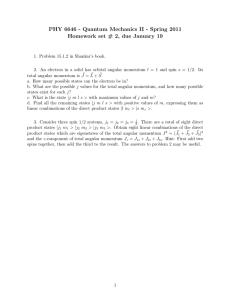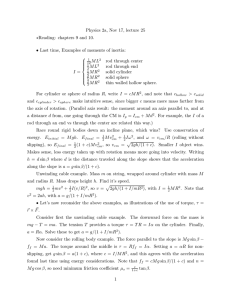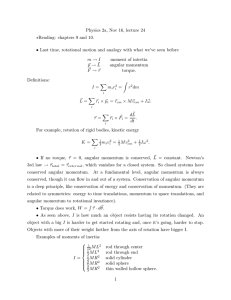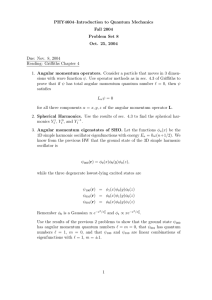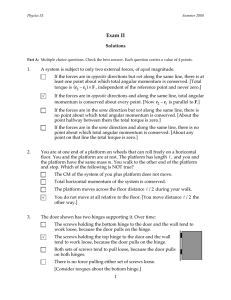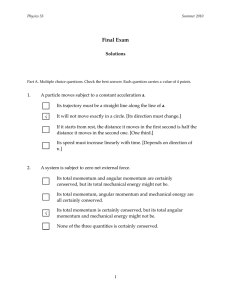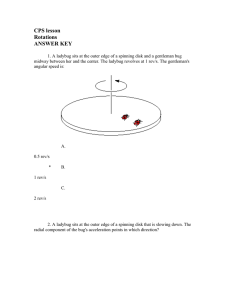Physics 2a, Nov 15, lecture 23 ⋆ Reading: chapters 9 and 10. r
advertisement
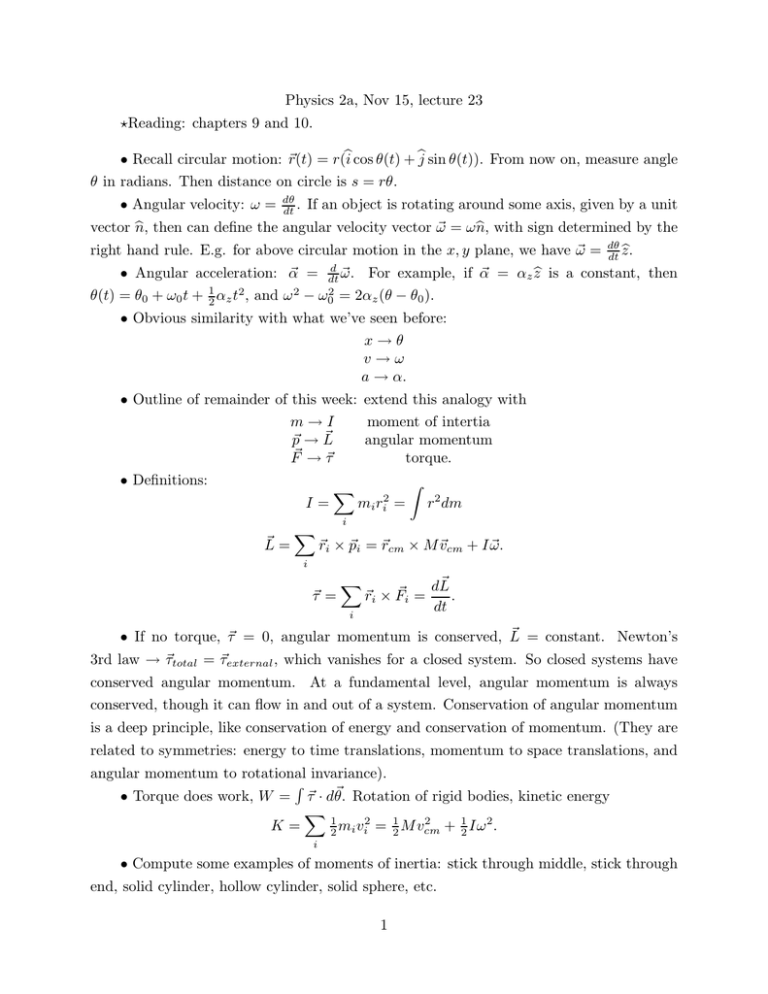
Physics 2a, Nov 15, lecture 23 ⋆Reading: chapters 9 and 10. • Recall circular motion: ~r(t) = r(bi cos θ(t) + b j sin θ(t)). From now on, measure angle θ in radians. Then distance on circle is s = rθ. • Angular velocity: ω = dθ dt . If an object is rotating around some axis, given by a unit vector n b, then can define the angular velocity vector ω ~ = ωb n, with sign determined by the right hand rule. E.g. for above circular motion in the x, y plane, we have ~ω = • Angular acceleration: α ~ = θ(t) = θ0 + ω0 t + 1 2 2 αz t , 2 and ω − d ω . For dt ~ 2 ω0 = 2αz (θ dθ zb. dt example, if α ~ = αz zb is a constant, then − θ0 ). • Obvious similarity with what we’ve seen before: x→θ v→ω a → α. • Outline of remainder of this week: extend this analogy with moment of intertia angular momentum torque. m→I ~ p~ → L F~ → ~τ • Definitions: I= ~ = L X X mi ri2 i = Z r 2 dm ~ri × ~pi = ~rcm × M~vcm + I~ω. i ~τ = X i ~ dL . ~ri × F~i = dt ~ = constant. Newton’s • If no torque, ~τ = 0, angular momentum is conserved, L 3rd law → ~τtotal = ~τexternal , which vanishes for a closed system. So closed systems have conserved angular momentum. At a fundamental level, angular momentum is always conserved, though it can flow in and out of a system. Conservation of angular momentum is a deep principle, like conservation of energy and conservation of momentum. (They are related to symmetries: energy to time translations, momentum to space translations, and angular momentum to rotational invariance). R ~ Rotation of rigid bodies, kinetic energy • Torque does work, W = ~τ · dθ. X 2 1 K= m v 2 = 21 M vcm + 12 Iω 2 . 2 i i i • Compute some examples of moments of inertia: stick through middle, stick through end, solid cylinder, hollow cylinder, solid sphere, etc. 1

